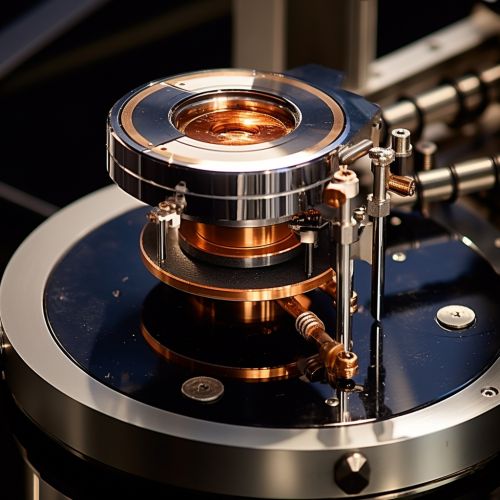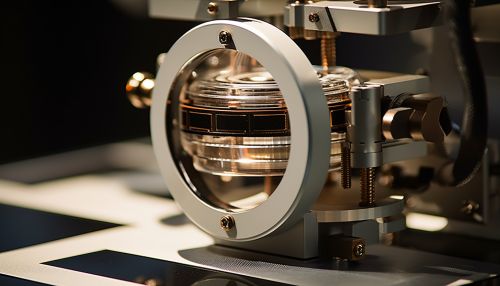Quantum Optomechanics
Introduction
Quantum optomechanics is a field of physics that investigates the interaction between light and mechanical motion at the quantum level. It is a subfield of quantum optics and is closely related to quantum information processing, quantum computing, and quantum communication. The field has seen significant growth and development in the last few decades, with many groundbreaking experiments and theoretical advances.
Theoretical Background
Quantum optomechanics is based on the principles of quantum mechanics, which describes the behavior of particles at the smallest scales. Quantum mechanics is a fundamental theory in physics that provides a description of the physical properties of nature at the scale of atoms and subatomic particles. It is the foundation of all quantum physics including quantum chemistry, quantum field theory, quantum technology, and quantum information science.
The theory of quantum optomechanics is based on the interaction of light with mechanical systems. This interaction is described by the quantum theory of radiation pressure, which is a fundamental force in nature. Radiation pressure is the pressure exerted by the electromagnetic field on the surfaces of objects. In quantum optomechanics, the radiation pressure of light is used to control and manipulate the mechanical motion of objects.
Key Concepts
One of the key concepts in quantum optomechanics is the quantum harmonic oscillator. This is a system that oscillates under the influence of a restoring force which is proportional to the displacement from the equilibrium position. In quantum optomechanics, the harmonic oscillator is often a mechanical resonator, such as a tiny mirror or a nanomechanical beam, which is coupled to an optical field.
Another important concept is the quantum superposition principle, which states that a physical system—such as an electron, a photon, or an atom—can exist in multiple states simultaneously. In quantum optomechanics, the superposition principle is used to create and manipulate quantum states of mechanical systems.
The concept of quantum entanglement is also crucial in quantum optomechanics. Entanglement is a unique quantum phenomenon where the states of two or more particles become linked, such that the state of one particle cannot be described independently of the state of the other particles. In quantum optomechanics, entanglement is used to create and manipulate quantum correlations between light and mechanical motion.
Experimental Techniques
There are several experimental techniques that are commonly used in quantum optomechanics. One of the most common techniques is cavity optomechanics, where a mechanical resonator is placed inside an optical cavity. The resonator and the cavity form a coupled system, and the interaction between the resonator and the light field in the cavity can be controlled and manipulated.
Another important technique is optomechanical cooling, which is used to cool mechanical resonators to their quantum ground state. This is achieved by using the radiation pressure of light to dampen the thermal motion of the resonator.
Applications
Quantum optomechanics has a wide range of potential applications. One of the most promising applications is in quantum information processing, where quantum optomechanical systems can be used to store, manipulate, and transmit quantum information. This could lead to the development of quantum computers, which could solve certain problems much faster than classical computers.
Another potential application is in quantum communication, where quantum optomechanical systems could be used to transmit quantum information over long distances. This could lead to the development of quantum networks, which could provide secure communication channels that are immune to eavesdropping.
Quantum optomechanics could also be used in precision measurement and sensing. For example, quantum optomechanical systems could be used to measure tiny forces, displacements, and accelerations with unprecedented precision.
See Also
- Quantum Mechanics
- Quantum Optics
- Quantum Information Processing
- Quantum Communication
- Quantum Computing


